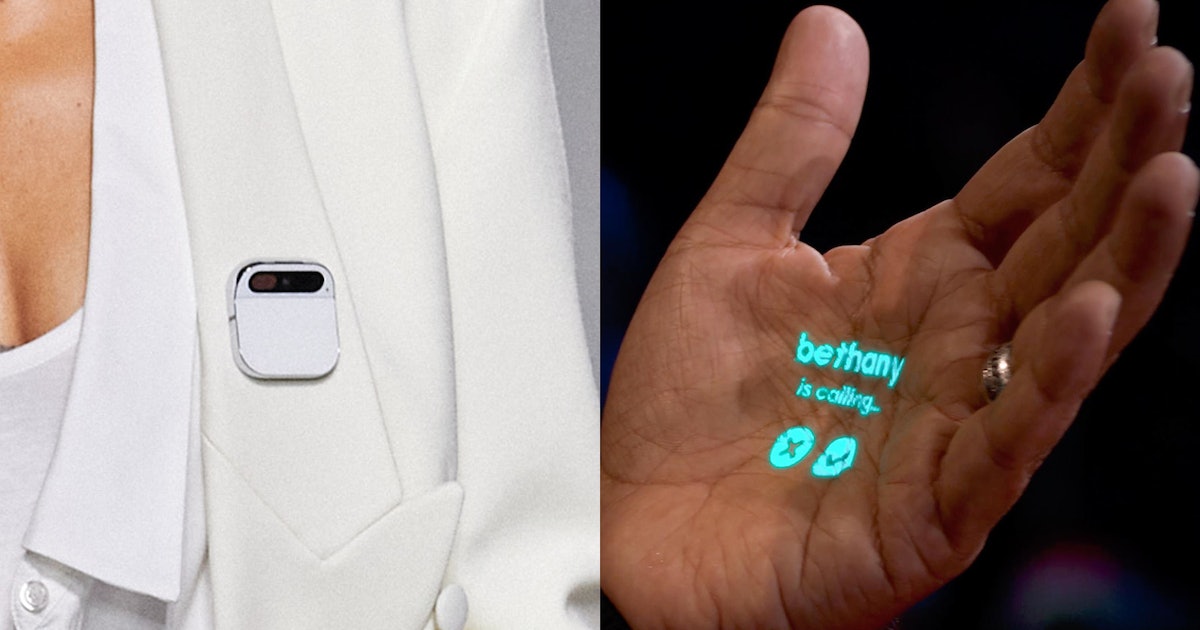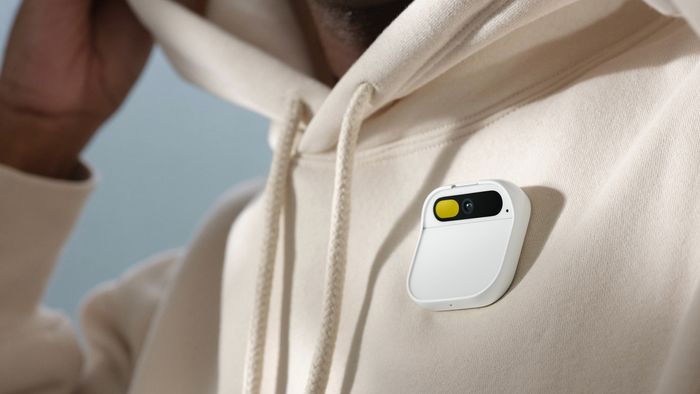Published
8 months agoon

Silicon Valley company Humane launches its latest innovation, “Humane AI Pin,” a wearable device engineered to attach to the user’s lapel, functioning as a smartphone and digital interface. Founded by former Apple designers, Humane’s latest innovation holds significant potential to transform personal computing.
What’s Unique about Humane’s AI Pin?
Founded by Imran Chaudhri and Bethany Bongiorno in 2019, Humane introduced a device that allows interaction through voice commands, touchpads, or gestures. Its distinct technology revolves around the Laser Ink Display, projecting information onto the user’s palm.
The founders said in the official press release, “The AI Pin is the embodiment of our vision to integrate AI into the fabric of daily life, enhancing our capabilities without overshadowing our humanity.”
Priced at $699, the device integrates an RGB camera, microphone, depth sensor, and motion sensors, collectively gathering and processing data on the device. Powered by a Snapdragon processor and a dedicated Qualcomm AI engine, it promises optimal performance.
For those who find their latest smartphones cumbersome, this innovative wearable presents an intriguing alternative poised for imminent use. This development offers an expansive view of our technological landscape, featuring elements already embedded in our daily lives and others expected to emerge in the coming years. Artificial Intelligence (AI) underpins the core functionality of the devices we utilize.
How Does Humane’s AI Pin Work?

The AI Pin utilizes Humane’s Mobile Virtual Network Operator (MVNO) connection, which operates through T-Mobile. Devices connected to this network can obtain a cell phone number, granting users unlimited text and data access.
Interaction with the device can be done through voice commands, the touchpad, or the Laser Ink Display.
Humane AI Pin: Creative Attributes
The AI Pin, driven by a Qualcomm chip, incorporates intelligent sensors that are highly sensitive to gestures. It is also equipped with a Snapdragon processor, 4GB RAM, and 32GB storage. It is worth mentioning that this device is activated by touch, prioritizing privacy over constant listening.
The AI Pin boasts of its exceptional integration with OpenAI’s GPT-4, which empowers it to deliver customized responses and execute functions such as call management and instantaneous language translation. Additionally, its camera could identify objects and display information on the user’s hand, thereby creating a display without a screen.
Humane AI Pin is a compact device that can be attached to your clothing or bag. Unlike a smartphone, it lacks a screen but is equipped with a camera, microphone, speaker, and a miniature laser projector that can display information on your hand.
This device is designed with a focus on AI and can perform various functions such as taking photos or videos, playing music, making calls, and providing answers to queries.
The Importance of Connectivity and Privacy of Humane AI Pin
Humane prioritizes privacy by ensuring that user data is used solely to enhance personalization and not to train the AI. Additionally, the device is equipped with Bluetooth 5.1, enabling private conversations through headsets.
Two key elements: Subscription and services
The AI Pin is accompanied by a monthly subscription of $24, which provides users with unlimited calling, texting, and data via T-Mobile. Humane’s website allows users to conveniently manage the device, synchronize contacts, and access various services such as music.
Humane AI Pin: Investment and Outlook
Humane AI Pin has secured an impressive $230 million in funding, showcasing a remarkable level of trust from investors. Co-founder Imran Chaudhri has eloquently expressed the company’s mission to introduce a revolutionary era of personal computing that is seamless, devoid of screens, and highly perceptive.
How Will the AI Pin Impact the Smartphone Industry?
The AI Pin poses a potential challenge to the smartphone market by merging the traditional smartphone experience with virtual assistant functionalities within a compact wearable device.
In 2007, the introduction of the first iPhone marked the dawn of a new era in smartphones, eclipsing conventional cell phones with limited internet access. These smartphones not only provided unrestricted internet access but also empowered users to download and use local applications.
Since then, smartphones have evolved into the primary personal device for accessing online content.
The AI Pin, besides facilitating basic smartphone tasks like calling and social connectivity, integrates generative AI capabilities. Its distinctive feature liberates users from the necessity of a screen for interaction. Yet, while this innovation shows promise, it remains uncertain whether such devices will surpass smartphones in the foreseeable future.


Paris 2024 Olympics: 5 of the most stylish uniforms on show


FM showers special love on Bihar and Andhra Pradesh in Budget 2024, as Opposition leaders cry “Kursi Bachao”


DreameIndia Appoints Manu Sharma as Managing Director to lead its India Operations and Market Expansion


Amazon eyes Swiggy Instamart to boost Quick Commerce in India


Economic Survey urges creation of 78.51 Lakh non-farm jobs annually


Explained: The significance of Savan in India

